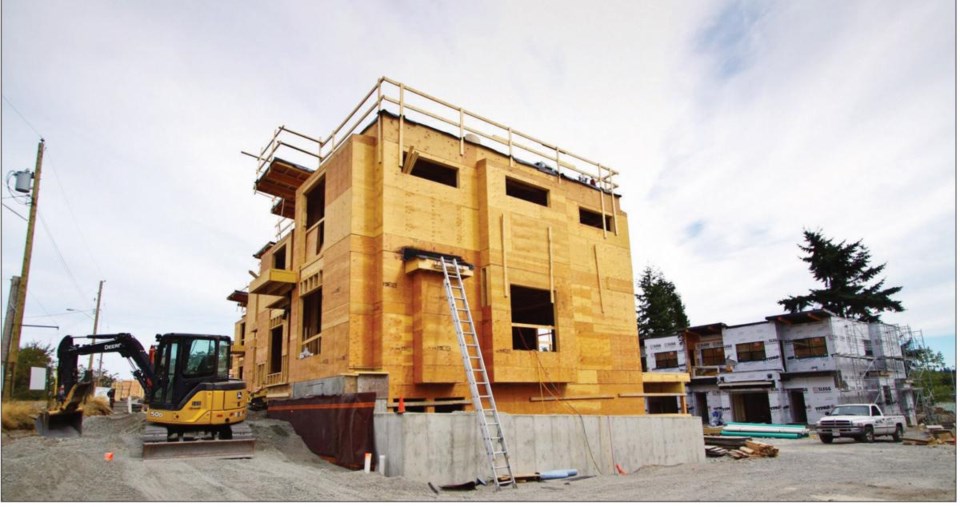Greater Victoria's housing affordability continues to steadily improve even though it remains higher than several other major markets in Canada.
At the end of this year's second quarter, the capital region's housing affordability rate was 42.2 per cent for a detached bungalow, 42.3 per cent for a twostorey house, and 25.7 per cent for a condominium, according to the Royal Bank, which released its housing trends and affordability report on Monday.
That means that an owner of a bungalow would have to spend 42.2 per cent of annual income on mortgage payments, utilities and property taxes.
The latest figure is an improvement from April 2010, when the rate was 53.7 for bungalow owners. It has dropped every quarter since. During the hot housing market in 2007, the affordability rate topped 57 per cent.
Victoria's level is far below Vancouver, the least affordable city in the country. RBC pegs affordability at 91 per cent for a Vancouver bungalow, 93.8 per cent for a two-storey house and 45.2 per cent for a condo. In Victoria, the share of income needed to carry the costs of a mortgage at market prices is almost half the share in Vancouver for some housing types, the report said.
"The Vancouver situation is not being replicated outside of Vancouver," RBC senior economist Robert Hogue said from Toronto.
"It's evidence that affordability in Victoria is much better."
However, if the capital region is compared with other parts of Canada, it would not be considered an affordable market, Hogue said.
Edmonton's affordability measure for a bungalow is 32.4 per cent, Calgary is at 36.7 per cent, Montreal is 40.4 per cent and Ottawa is 41.9 per cent. Toronto is higher at 54.5 per cent.
For Canada as a whole, the affordability rate for a bungalow came in at 43.4 per cent, up slightly by 0.2 per cent from the previous quarter. The affordability measure for two-storey homes also rose, by 0.6 per cent to 49.6 per cent. Condos held steady nationally at 28.8 per cent, the report said. "Modest rises in home prices and mortgage rates eroded housing affordability in Canada in the second quarter of 2012."
For B.C. overall, affordability rates stood at 69.7 for detached bungalow, 74.2 per cent for a two-storey house and 35.2 per cent for a condo.
Alberta had the most affordable housing market in Canada due to a 17 per cent decline in utility costs and lower natural gas prices, the report said.
Key factors for affordability, in the past and going forward, are interest rates, which are expected to increase in the future, Hogue said. "As the interest rates start rising, then we might see a little bit more pressure on affordability, so Victoria would also see the effect of higher interest rates going forward."
Victoria Coun. Lisa Helps said the housing affordability remains an issue considering that the standard recommendation these days is that families should not spend more than 30 per cent of their income on housing. That contrasts to the 1950s in this region when 20 per cent was considered the standard, she said.
Another concern is that as low-income individuals work to improve their situations, it is difficult to make the leap into home ownership because of affordability levels, she said.
Last year, the capital region earned a D-plus in the annual Vital Signs report from the Victoria Foundation. It stated that for a median income family, the average house cost was equal to 6.12 years of annual pre-tax income in 2009. That compares to national average of 4.68 years and provincial average of 6.98 years.
cjwilson@timescolonist.com



